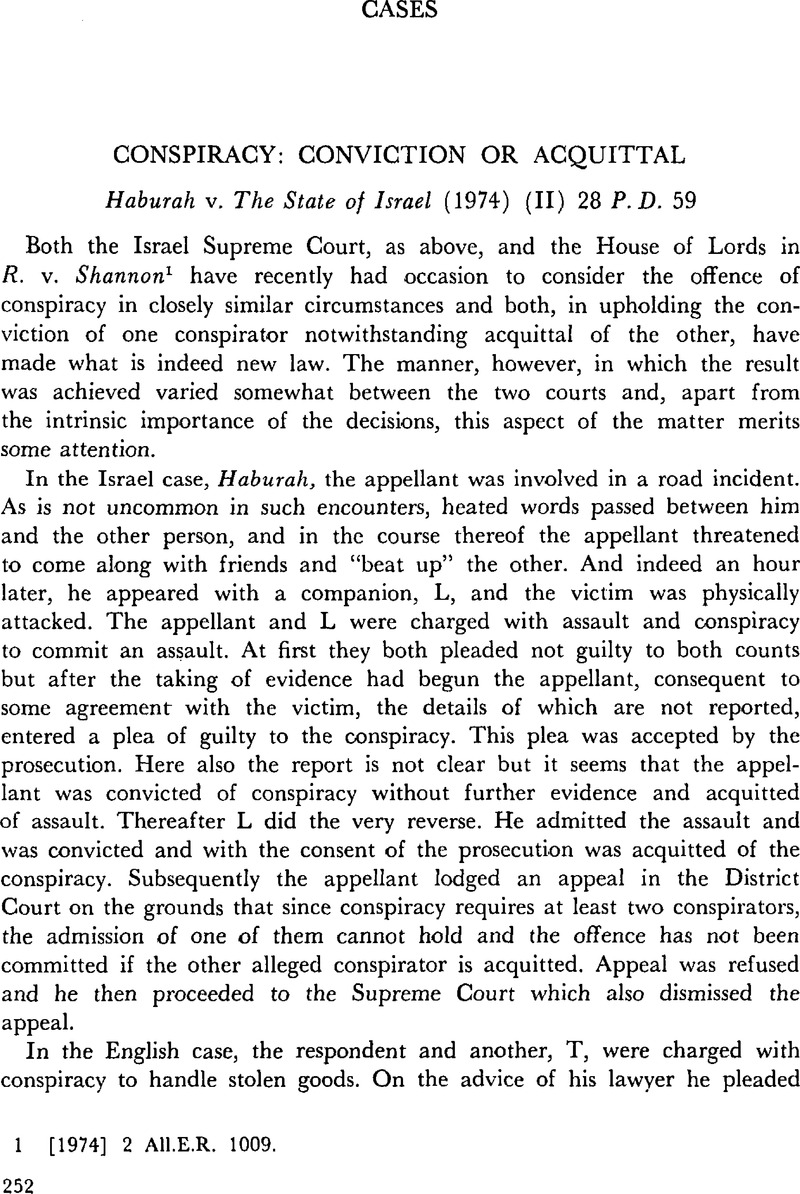No CrossRef data available.
Article contents
Conspiracy: Conviction or Acquittal
Published online by Cambridge University Press: 12 February 2016
Abstract

- Type
- Cases
- Information
- Copyright
- Copyright © Cambridge University Press and The Faculty of Law, The Hebrew University of Jerusalem 1975
References
1 [1974] 2 All. E.R. 1009.
2 “Any person who conspires with another to commit a felony [or misdemeanour] … is guilty of an offence”.
3 Williams, Gl., Criminal Law (1961) 669.Google Scholar
4 Ibid., at p. 670; Smith, and Hogan, , Criminal Law (3rd ed., 1973) 181Google Scholar; Russell, on Crime, (11th ed., 1958) 1693–94.Google Scholar
5 Williams, loc. cit.
6 Smith and Hogan, loc. cit.
7 An interesting parallel is the rule that a person benefitting from a crime cannot assert a right to any benefit he may seek to acquire as a result of the crime. See Earnshaw, T. K. and Pace, P. J., “Let the Hand Receiving It Be Ever So Chaste” (1974) 37 Mod.L.R. 481, 493 et seq.CrossRefGoogle Scholar
8 Williams, loc. cit.
9 A possible exception is Archbold, Pleading etc., in Criminal Cases (36th ed., 1966) paras. 4177–79.Google Scholar
10 Per Salmon, Lord in Shannon at p. 1947.Google Scholar
11 At pp. 1022–23.
12 Feder v. U.S.A. 5 A.L.R. 370.
13 Surujpaul called Dick v. R. [1958] 3 All E.R. 300.
14 [1902] 2 K.B. 339.
15 Per Lord Simon at p. 1043. Cf. per Lord Salmon at p. 1049.
16 Cf. per Viscount Dilhorne at p. 1039.
17 At p. 1049.
18 See at p. 1034 (Lord Morris), at p. 1039 (Viscount Dilhorne), at pp. 1041–42 (Lord Simon), at pp. 1049–50 (Lord Salmon).
19 Per Lord Salmon at p. 1049.
20 See at pp. 1041, 1046, 1048.


